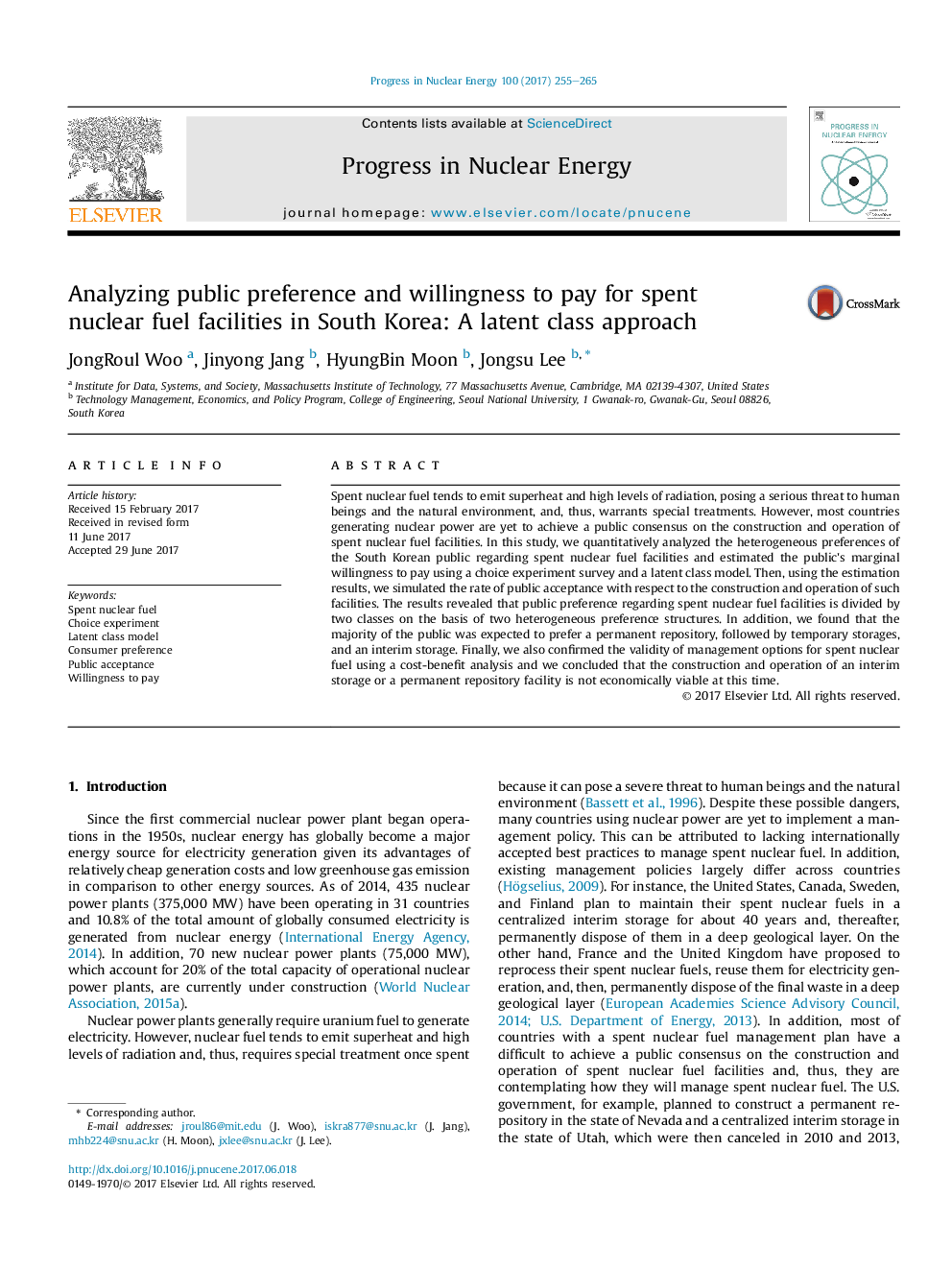| Article ID | Journal | Published Year | Pages | File Type |
|---|---|---|---|---|
| 5478183 | Progress in Nuclear Energy | 2017 | 11 Pages |
Abstract
Spent nuclear fuel tends to emit superheat and high levels of radiation, posing a serious threat to human beings and the natural environment, and, thus, warrants special treatments. However, most countries generating nuclear power are yet to achieve a public consensus on the construction and operation of spent nuclear fuel facilities. In this study, we quantitatively analyzed the heterogeneous preferences of the South Korean public regarding spent nuclear fuel facilities and estimated the public's marginal willingness to pay using a choice experiment survey and a latent class model. Then, using the estimation results, we simulated the rate of public acceptance with respect to the construction and operation of such facilities. The results revealed that public preference regarding spent nuclear fuel facilities is divided by two classes on the basis of two heterogeneous preference structures. In addition, we found that the majority of the public was expected to prefer a permanent repository, followed by temporary storages, and an interim storage. Finally, we also confirmed the validity of management options for spent nuclear fuel using a cost-benefit analysis and we concluded that the construction and operation of an interim storage or a permanent repository facility is not economically viable at this time.
Keywords
Related Topics
Physical Sciences and Engineering
Energy
Energy Engineering and Power Technology
Authors
JongRoul Woo, Jinyong Jang, HyungBin Moon, Jongsu Lee,
